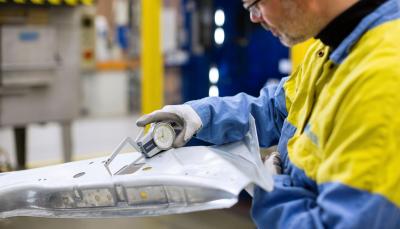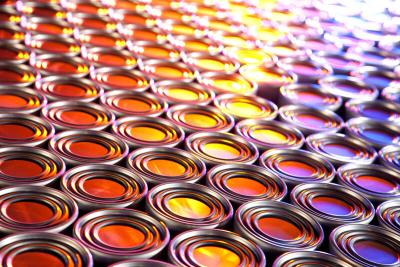Peter Barker at Tata Steel examines poor indoor air quality and how it can impact the health and well-being of building occupants.

Here Dr Peter Barker at Tata Steel examines poor indoor air quality and how it can impact the health and well-being of building occupants, while detailing how new solutions from leading building product brands have been developed with less Volatile Organic Compounds (VOC), to contribute to healthier interiors.
In recent years, there has been a lot of discussion around the nation’s deteriorating air quality. In fact, recent research revealed that air pollution in several parts of the country is in breach of EU safety limits. It’s a problem that affects us all, with researchers believing that 28,000 deaths a year in the UK can be attributed to air pollution. Despite all the evidence, it’s still hard to surmise if enough is being done to combat the issue. What’s more, any action that has been taken has exclusively focussed on outdoor air quality, which ignores the problem of poor indoor air quality.
The Silent Threat
Many of us assume that the air we breathe in on a daily basis is safe. Unfortunately, this is often incorrect and akin to outdoor air quality, poor indoor air quality can pose a significant threat to your health. Additionally, as people spend up to 90% of their lives indoors, the effects of indoor air quality have the potential to be far more damaging. To this end, the United States Environmental Protection Agency ranked indoor air pollution as one of the top five environmental risks to the public health in 2016.
Indoor air pollutants can take many forms, but the most common are Volatile Organic Compounds (VOCs). These carbon-based chemicals are present in a plethora of everyday household goods, such as air fresheners, cleaning chemicals and paints. At any one time, there can be between 50-100 individual VOCs in the air. However, as the chemicals evaporate easily at room temperature and tend to be odourless it can be difficult to know if they’re present.
What’s more, there is often not a single cause of indoor air pollutants within a home and the problem can be the by-product of underlying structural issues. In recent years, as home design has shifted towards more secure, energy-efficient builds, indoor ventilation in some homes may have suffered. Poor ventilation can contribute to a higher concentration of VOCs in the atmosphere. To further compound the issue, some older homes in the UK have been built from materials that are laden with harmful chemicals.

Health Effects
For people suffering from asthma, or other respiratory conditions, high levels of VOCs pose a real and immediate threat. The same applies for young children, or old people, both of whom are highly susceptible to the effects of pollution in a home. Regardless of pre-existing conditions, anyone can suffer if exposed to poor indoor air quality for a prolonged period of time. Studies have shown a link between contact with VOCs and a number of serious health conditions.
Short-term exposure to high levels of VOCs can cause symptoms such as throat irritation, headaches, nausea and vomiting, dizziness, and the worsening of asthma symptoms. More seriously, long-term exposure to high levels of VOCs can lead to an increased risk of liver damage, kidney damage, cancer, and central nervous system damage. The thought of developing any of these conditions is frightening, as many can prove fatal. Additionally, the effects of poor indoor air-quality don’t only manifest physically and the issue has been linked to poor mental health management and weight gain.
Solving the problem
For a long time, the only solution to dealing with harmful VOC’s was to limit the use of cleaning products that contained the dangerous particles. However, not all VOCs are emitted by household cleaning goods and therefore, simply limiting use of such products might not fix the problem.
Fortunately, manufacturers are now developing products that emit low level VOCs. This is also recognised by environmental assessment systems such as LEED. For example,Tata Steel is now producing steel products that have been subjected to rigorous industrial testing for VOCs. Products such as Advantica® L Control, Colorcoat Prisma® and Colorcoat HPS200 Ultra® pre-finished steel have been independently tested in accordance with EN ISO 16000-9, which determines the emission of volatile organic compounds from building products and furnishings. All achieved an A+ rating, which is currently the highest level of rating available.
What’s more, not only do the products push the boundaries for indoor air quality performance, they also meet the highest European corrosion resistance standards for both internal and external environments, while being fully chrome free.
There are people around the country working in environments that could actively contribute to the deterioration of their health. As such, it’s vital that more action is taken to raise awareness around the subject of poor indoor air quality. To this end, it’s important to ensure solutions with the highest level of ratings are specified. With politicians more concerned about outdoor air quality, it falls on the industry to solve the problem itself. Fortunately, we’re in a better position than ever to do just that and to make our nation’s buildings healthier.






















































